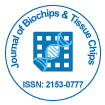Review Article
Nanomaterial-modified Flexible Micro-electrode Array by Electrophoretic Deposition of Carbon Nanotubes
Winkin N1*, Gierth U2, Mokwa W1 and Schneider M21RWTH Aachen University, Institute of Materials in Electrical Engineering, Sommerfeldstraße, Achen, Germany
2Fraunhofer Institute for Ceramic Technologies and Systems IKTS, Electrochemistry, interbergstraße 28, Dresden, Germany
- Corresponding Author:
- Winkin N
RWTH Aachen University
Institute of Materials in Electrical Engineering
Sommerfeldstraße 24, 52074 Aachen, Germany
E-mail: winkin@iwe1.rwth-aachen.de
Received date: April 21, 2016; Accepted date: May 25, 2016; Published date: June 02, 2016
Citation: Winkin N, Gierth U, Mokwa W, Schneider M (2016) Nanomaterial-modified Flexible Micro-electrode Array by Electrophoretic Deposition of Carbon Nanotubes. Biochip Tissue Chip 6:115. doi:10.4172/2153-0777.1000115
Copyright: © 2016 Winkin N, et al. This is an open-access article distributed under the terms of the Creative Commons Attribution License, which permits unrestricted use, distribution, and reproduction in any medium, provided the original author and source are credited.
Abstract
Micro-electrode arrays (MEAs) and micro-electrodes are used in a variety of medical applications for recording action potentials or stimulating neurons. To have an excellent signal-to-noise ratio, the contact between the neuronal tissue and the micro-electrodes must be very close. Therefore, a flexible MEA with a large number of electrodes on a large area is necessary. In this work, a flexible micro-electrode array (MEA) with an integrated flexible CMOS-chip was designed and fabricated. By connecting several of these MEAs by a bus system, the number of electrodes and therefore the spatial resolution can be increased extremely. Because of the small size of the micro-electrodes (<120 µm) each electrode needs a high charge delivery capacity and a high “true” surface area for stimulation, respectively. This can be obtained by coating the electrodes by disordered multi-walled carbon nanotubes (MWCNTs). Direct current pulsed Electrophoretic Deposition (EPD) has been proved successfully for the aforementioned application. The effective deposition time and the pulse width were figured out to create ideal MWCNT-electrode properties, particularly, with regard to the enhancement of the “true” surface area, microscopic homogeneity and reproducibility of the layer.

 Spanish
Spanish  Chinese
Chinese  Russian
Russian  German
German  French
French  Japanese
Japanese  Portuguese
Portuguese  Hindi
Hindi